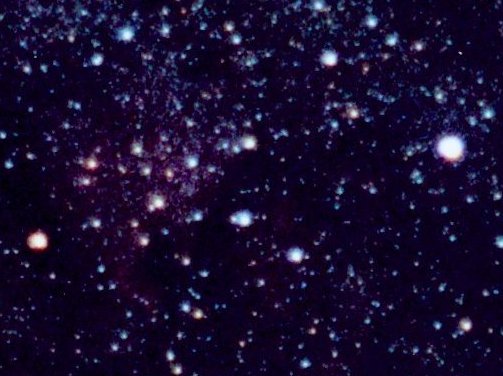
 |
First magnitude Deneb (Alpha Cygni) shines at far right, while fourth magnitude Xi Cygni lies at the far left edge just below center. Note the color contrast: Deneb is a white class A supergiant, Xi Cyg a much cooler mid-class K orange supergiant. In between (and closer to Xi) is the faint reddish glow of the North America Nebula, NGC 7000; the fainter Pelican Nebula is down and to the right. The two stars between Deneb and Xi (from right to left 56 and 57 Cygni) point upward to a fuzzy patch within the North America Nebula, a distant star cluster called NGC 6997. See the labelled version. |